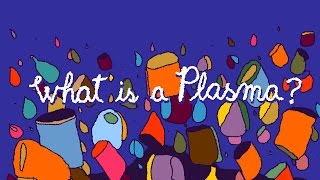(单词翻译:单击)
Have you ever seen static electricity cause a spark of light?
你曾经见过静电引起的火花吗?
What is that spark? What about lightning, the Northern Lights, or the tail of a comet?
这个火花是什么呢?闪电又是什么呢,北极光又或者是彗尾呢?
All of those things, and many others, in fact 99.9% of the universe, are made of plasma.
事实上,所有这些现象以及宇宙中其他类似现象中,99.9%都是由等离子体产生的。
Plasma is a state of matter drastically different from the more familiar forms.
等离子体是物质的一种状态,与我们所熟悉的其他物质状态极其不同。
Take ice, for example. Ice, a solid, melts to become water, a liquid, which, when heated, vaporizes into steam, a gas.
以冰为例。固态冰受热融化为液态水,液态水受热蒸发为水蒸气。
Continued heating of the steam at a high enough temperature
继续加热水蒸气至足够高的温度,
causes the water molecules in it to separate into freely roaming hydrogen and oxygen atoms.
会使其中的水分子分解为可以自由移动的氢原子和氧原子。
With a little more heat, the ionization process occurs
再给予少量的热量,离子化过程就发生了,
and the negatively charged electrons escape the atoms, leaving behind positively charged ions.
带负电的电子逃离原子,从而留下带正电的离子。
This mixture of freely roaming negative and positive charges is plasma,
这种能够自由移动的,带有正负电荷的离子混合物就是等离子体,
and at a high enough temperature, any gas can be made into one.
在足够高的温度下任何气体都能转变为等离子体。
These freely moving charged particles behave very differently from the particles in other types of matter.
这些自由移动的带电粒子与组成其他物质状态的粒子的行为很不一样。
When a doorknob, a solid, has static electricity on it, it doesn't look or behave any differently.
当一个固态的门把手携带了静电,它并不会有太大的不同。
And with the exception of a compass or other magnetic object, we rarely see matter respond to a magnetic field.
除了指南针和其他磁体,我们很少看到物质受到磁场的影响。
But put a plasma in an electric field or magnetic field, and you'll get a very different reaction.
但是如果等离子体被置于电场或者磁场之中,它们会产生非常不同的反应。
Because plasmas are charged, electric fields accelerate them, and magnetic fields steer them in circular orbits.
因为等离子体中的离子带有电荷,电场会对它们进行加速,而磁场会驱使它们形成圆周轨道。
And when the particles within plasma collide, or accelerated by electricity or magnetism, light is generated,
当等离子体中的粒子发生碰撞或者被电场或磁场加速时,光就产生了,
which is what we see when we look at plasmas like the Aurora Borealis.
这也就是我们所观察等离子体时所看到的,比如北极光。

Plasmas aren't just beautiful, celestial phenomena, though.
但是等离子体不仅仅是绚丽的天空现象。
Imagine a tiny cube made of normal gas with a very high voltage across it.
想象一下,一个装有正常气体的小方块被高电压贯穿。
The resulting electric field pushes some of the electrons off the atoms
高电压产生电场,电场驱使电子从原子脱离,
and accelerates them to high speeds causing the ionization of other atoms.
然后使电子具有很高的速度,并使其他原子也离子化。
Imbedded impurities in the tiny cube of gas cause it to gain and release a precise amount of energy in the form of ultraviolet radiation.
气体中夹杂的杂质会使气体以紫外线辐射的方式吸收和释放一定量的能量。
Attached to each tiny cube, a fluorescent material glows with a specific color when ultraviolet light at just the right intensity reaches it.
每个小立方体的表面上附着有荧光物质,当紫外线以适当的强度激发它们时,荧光物质就会发出特定颜色的光。
Now, make a rectangle out of a million of these tiny cubes, each separately controlled by sophisticated electronics.
现在我们用一百万个这样的小立方体组成一个长方形,每个立方体都由复杂的电子元件控制着。
You may be looking at one now. This is called a plasma TV.
你现在可能正在看它。这就是等离子电视。
Plasmas also have implications for health care.
等离子体对人体健康也有积极影响。
Plasma chemists create highly specific plasmas that can destroy or alter targeted chemicals,
等离子化学家制造特定的等离子体,这种等离子体能够消除或者替换目标化学物,
thereby killing pathogenic organisms on food or hospital surfaces.
从而杀死食物中或医院里各种表面上的病原体。
Plasmas are all around us, in forms that are both spectacular and practical.
等离子体无处不在,它既壮观绚丽又真实存在。
And in the future, plasma could be used to permanently rid landfills of their waste,
未来,等离子体能够使我们永久地摆脱垃圾填埋,
efficiently remove toxins from our air and water,
它能有效地清除空气和水中的毒素,
and provide us with a potentially unlimited supply of renewable clean energy.
为我们提供一种潜在的用之不竭的可再生的清洁能源。


